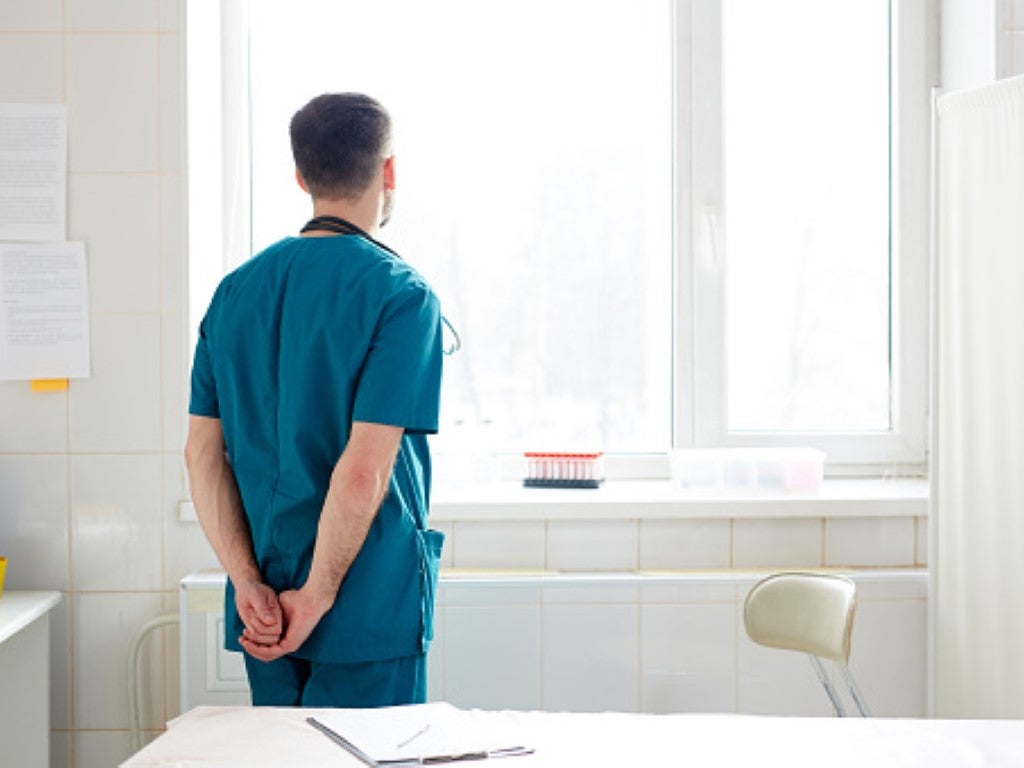Theory meets practice: starting clinical placements
Monday, 17 March 2025

It goes without saying that starting clinical placements is a daunting but exciting time for all medical students. Having sat through numerous didactic teaching sessions, finally it’s time to invest in a shiny new stethoscope, update the wardrobe with smart ‘professional’ clothes, and head to the wards.
We’ve outlined some tips on how to approach this eagerly anticipated but unfamiliar environment. It can be a tricky transition with a steep learning curve, but it will most definitely be incredibly rewarding.
Focus your preparation: no need for a cover-to-cover textbook marathon
In order to feel comfortable attending your first clinical placement, it may help to familiarise yourself with the relevant core clinical examinations and history taking. Take a dynamic approach to this by watching clinical videos, practicing on your med school colleagues, or even family and friends and through seeing doctors interacting with patients during your rotations as much as possible.
Other than knowledge, it’s important to be organised. Make sure you pack your stethoscope, notebook and pen and choose an outfit that you feel comfortable in, but also presents you well to both the clinical staff and patients. Your shoes will be the most visible part of your outfit, so these need to be smart as well as comfortable. You can look to interns for wardrobe inspiration.
Day one: be friendly, professional and punctual
Morning ward rounds can be physically and mentally exhausting, so make sure you have a proper breakfast and pack some snacks. Plan your journey ahead of time and, if possible, car share or use public transport to minimise the stress of the morning.
On arrival, introduce yourself to everyone and check your badge/ID is visible to staff. Make sure to locate the ward unit nurse manager or nursing team leader and make yourself known to them. You may like to let staff (and also patients) know what year of your studies you’re in, as this can help set expectations.
Ask the team where the doctors meet for the morning handover or ward round and head there. They’ll be expecting you. Remember, though this is day one for you, they’ve had medical students shadow them many times before.
No question is a stupid question, but there are definitely good and bad times for questions. Try not to interrupt family discussions or patient conversations with the treating teams. Instead make a note of your questions and ask at a more appropriate and non-disruptive time.
Make every day count: keep it simple and stay focused
Maximise your time in the clinical space. It’s all too easy to hide away in the library after a long morning ward round, however, I'd advise you hang around and shadow the doctors as they work through the tasks generated. Being proactive and showing interest means you’ll be more likely to be included. You might be able to help as a second pair of hands, and there is no better way to learn than on the job. Plus, the quicker the work gets done, the more open the doctors will be for some impromptu bedside teaching.
If you find yourself lacking structure to your afternoon, make a list of positive examination findings during the morning ward round so you can return in the afternoon to spend more time with patients. (Just remember to check the hospital's policy around students being supervised when approaching patients.) Before you start a conversation or examination, make sure to wash your hands, introduce yourself to the patient and/or relatives and seek consent from them. Get used to talking to patients early on. This sounds straightforward but can be quite confronting. Sit down and begin with a simple conversation as you work towards taking a history.
Remember not to make any statements or conclusions to patients regarding their care without first verifying the information with the treating team. If they have questions, let them know you need to check with the medical and/or nursing teams and get back to them. Then make sure you remember to follow up.
Always work within your scope of practice.
Day’s over: reflect, rest and reset
Make sure you discard any confidential paperwork into the confidential waste. Keep a record without any identifiable data of the medical conditions you came across during the day, so you can read around those specific pathologies. This is how you’ll build up a strong foundation of core medical and surgical knowledge throughout your clinical placements. And will enable a greater depth of learning, understanding and recall. Be curious and ask the doctors for advice on making the most of each rotation.
Clinical rotations will be physically demanding, at times emotionally challenging and utterly exhausting. It’s important to learn how to maintain a healthy work-life balance early on.
Make sure you eat regularly, keep hydrated and engage in physical activity outside of your clinical presentations. Be kind to yourself and factor in down time. Spend time discovering hobbies and the strategies to destress and unwind that work for you. This can help avoid burnout later in your career. Reach out to your clinical and non-clinical supervisors if you need to debrief. Reflect, but don’t ruminate.
Start your placement the way you want it to continue for the rest of your career. Good habits take practice.
Good luck!
The information in this publication does not constitute legal, financial, medical or other professional advice and should not be relied upon as such. It is intended only to provide a summary and general overview on matters of interest and it is not intended to be comprehensive. Persons implementing any recommendations contained in this publication must exercise their own independent skill or judgement and seek appropriate professional advice relevant to their own particular circumstances. Compliance with any recommendations will not in any way guarantee discharge of the duty of care owed to patients and others coming into contact with the health professional or practice. Avant and its related entities are not responsible to any person for any loss suffered in connection with the use of this information. Information is only current at the date initially published.
More ways we can help you



